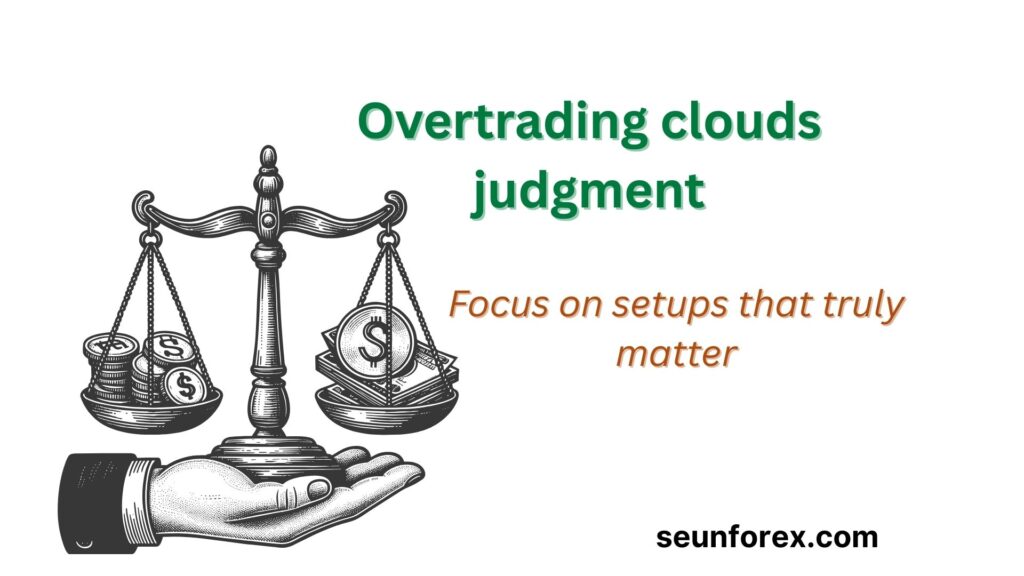
“The first year is a journey, not a sprint. Every lesson counts toward building long-term trading success.”
Trading beginners often feel the same way—they’re dropped into a world where every chart looks like a maze, every news headline feels like a cryptic code, and each profit or loss shakes them in ways they didn’t expect.
For trading beginners, the challenge isn’t just picking the right stock or forex pair—it’s learning the rules, understanding price action trading, and building the discipline to survive the ups and downs.
Some traders quit after a month. Others struggle for a year, slowly learning the ropes. A few rare ones, with patience and the right framework, turn that first year of trading into a launching pad for long-term success.
Here’s what you need to know to survive—and even thrive—during your first year trading guide journey.
🀄 Step 1: Understanding the Market Language
“Before you speak, you must listen.” — Old Trading Adage
When you open your first chart, it looks chaotic. Candles, wicks, and volume bars seem random. But experienced traders see a story. Each tick, each movement, tells a narrative about fear, greed, and opportunity.
Think of trading like learning a new language:
- Letters → Candlesticks: Red, green, wick length, body size.
- Words → Patterns: Flags, triangles, head & shoulders.
- Sentences → Context: Moving averages, trendlines, volume, market direction.
Your first year is about becoming fluent. Not in predicting the market, but in reading it accurately.
Mini Case Study:
When I first started, I thought every candlestick reversal was a guaranteed signal. I bought at the first green candle and sold at the first red. Within weeks, I realized that price context—support, resistance, volume—was missing from my decisions. That’s when I began studying patterns like a language instead of a guessing game.
📈 Step 2: Market Context First, Stock Second
Three out of four stocks move with the overall market. Ignoring the trend is like trying to swim against a strong current—you’ll struggle and waste energy.
✅ Rule for your first year of trading: Only go long when the market is rising and consider short positions when it’s falling.
Start by checking the major indexes: SPY, QQQ, and IWM. Are they above key moving averages? Are they making higher highs? If the answer is yes, you’re trading with the trend. If not, it’s better to wait.
Many trading beginners spend months chasing “hot” stocks, only to watch them drop because the market itself was weak. Don’t make the same mistake.
💡 Tip for beginner trading tips: Begin each day by scanning the market trend first. Once you know the trend, pick your stock or forex candidates—it makes trading much safer and easier to understand during your first year trading guide.
🧲 Step 3: Low Risk, High Potential Trades

Beginners often chase big moves and buy after the stock has already exploded. Professionals look for coiled springs—bases, flags, ranges—where price is compressing.
“I don’t chase. I anticipate.” — Mark Minervini
Lesson: Focus on setups that minimize risk and maximize potential. Waiting patiently is your competitive edge.
Consider this analogy: You don’t jump on a rocket that’s already in the sky. You wait for the launch pad, the coiled spring, the moment where potential energy becomes kinetic. That’s where the magic happens.
🔍 Step 4: How to Spot High-Probability Trades Using Price Action
When you’re new, all the technical terms can feel overwhelming. The truth is, you don’t need complex formulas or fancy indicators to find good trades. Price action—the way the price moves on the chart—is your best guide.
Here’s what to focus on:
- Look for Bases or Consolidation
- A base is when a stock moves sideways for a while after a drop or rise.
- Think of it as a spring being compressed: the longer and tighter it’s held, the more energy it can release when it breaks out.
- Examples: Flat sideways movement, small pullbacks, gentle ranges.
- Watch How the Stock Reacts to Support and Resistance
- Support = price level where buyers step in.
- Resistance = price level where sellers step in.
- A strong trade setup often happens when the stock bounces off support or breaks above resistance.
- Check for Clear Candlestick Patterns
- You don’t need complicated names. Focus on what the price is telling you:
- Small tight candles in a base = calm before the move
- Long green candle breaking above resistance = momentum starting
- Rejection candles (long wicks) = sellers fighting buyers
- You don’t need complicated names. Focus on what the price is telling you:
- Volume Confirms the Move
- Watch if more shares are being traded as the price moves.
- A breakout on high volume is stronger than one on low volume.
- Entry Should Be Close to Support or Low Point in Base
- The closer your entry is to support, the less you risk if the stock turns against you.
- Don’t chase a stock after it’s already spiked—it’s riskier.
- Keep It Simple: Trend and Strength
- Ask yourself: “Is this stock moving up more strongly than the market?”
- Stocks that rise steadily with small pullbacks are safer than ones with wild swings.
Example in Plain Terms:
Imagine a stock has been moving sideways between $20 and $22 for a month. That’s your base. One morning, the stock breaks $22 with a big green candle and higher volume. That’s a price-action signal: the spring is releasing, and the stock may continue up. If you buy near $22, you’re entering at the start of the move rather than chasing a stock that’s already at $25.
Rule of Thumb: Focus on how the price moves, where it pauses, and how it breaks out. Patterns and indicators are just tools—price action tells the real story.
🧠 Step 5: Journaling and Self-Reflection

Your first year of trading is less about winning every trade and more about learning your own behavior and decision-making style.
📓 Start a Trading Journal
- Track every entry and exit, including your reason for taking the trade.
- Record your emotions: were you fearful, greedy, or confident?
- Note patterns in your behavior: overtrading, hesitation, revenge trading, or impulsive entries.
🕰 Reflect Regularly
- Review your journal weekly.
- Adjust your trading rules based on what you see, not your ego or pride.
“The market teaches the patient; the impatient teach the market.”
Example:
Maria, a first-year trader I mentored, lost $2,000 in her first month. She diligently journaled every trade. Three months later, patterns emerged: she was chasing breakouts and ignoring market context. Once she adjusted her approach to follow trends and wait for low-risk setups, her win-rate improved dramatically, and she learned more from controlled mistakes than from lucky wins.
💡 Lesson for Trading Beginners:
Journaling and self-reflection are the fastest ways to grow during your first year trading guide. Understanding yourself and your reactions to losses and wins is just as important as learning price action or indicators.ored market trend. Once she fixed her approach, her win-rate doubled without changing her strategy.
📊 Step 6: Risk Management Is Your Lifeline
Inexperienced traders often focus only on profits, but experienced traders know that protecting capital is the most important skill—especially during your first year of trading.
✅ Risk Management Rules for Trading Beginners:
- Never risk more than 1–2% of your account per trade.
- Use stop-losses religiously to limit losses.
- Position size matters more than having a “perfect” strategy.
- Accept small losses to prevent one large loss from wiping out months of gains.
💡 Pro Tip:
Always calculate your risk in dollars, not just percentages. Know exactly how much you could lose before entering a trade. This simple step can save your account and build confidence during your first year trading guide.
Protecting capital is your lifeline. If you survive your first year with discipline, you’ll have the foundation to grow consistently.
⚡ Step 7: Avoid the Most Common First-Year Mistakes

- Overtrading — thinking volume = opportunity
- Ignoring market trend — trading against the tide
- Chasing setups — entering too late
- Poor journaling — no learning feedback
- Ignoring risk — betting capital you can’t afford to lose
- Emotional trading — letting fear/greed dictate trades
Case Study:
John was confident in his system, but ignored market context. He entered a short against a strong bull market. Within hours, his position was underwater. Lesson learned: context beats conviction.
🧭 Step 8: Mindset Matters More Than Strategy
“The best trades are often the ones you don’t take.” — Ed Seykota
Discipline, patience, and resilience will carry you further than any “perfect” strategy. During your first year of trading, growth is as much mental as it is technical.
✅ Key Mindset Principles for Trading Beginners:
- Expect drawdowns — losses are part of the process.
- Accept uncertainty — markets are probabilistic, not predictable.
- Celebrate small wins — they compound into skill and confidence.
💡 Mini-Exercise for Your First Year:
Every week, write down one trade you didn’t take and why. At the end of the month, review your notes. You’ll start to notice patterns in hesitation, fear, and missed opportunities. These insights are critical for trading beginners, helping you strengthen discipline and reduce emotional mistakes in your first year trading guide.
The goal is not perfection—it’s consistent learning, awareness, and improvement. Your mindset will determine how far you go in trading, especially during the early stages.ons.
📈 Step 9: Building a Routine for Success
A first-year trader without a routine is a ship without a compass. Here’s a simple daily framework:
- Pre-market (15–30 min):
- Review overnight news
- Check index futures
- Identify sectors in play
- Market Open (First Hour):
- Watch for trend confirmation
- Note high-volume movers
- Mid-day:
- Journal trades
- Study charts
- Post-market:
- Review trades
- Update journal
- Reflect on emotional state
Consistency beats luck. Your first year is training your discipline muscle.
📚 Step 10: Education Is Continuous
Education is key for trading beginners. Books, podcasts, and webinars help you understand markets, develop discipline, and improve your price action skills during your first year of trading.
Here are some recommended resources for your first year trading guide:
- How to Make Money in Stocks — William O’Neil: Learn how to spot high-probability setups and understand market trends.
- Trade Like a Stock Market Wizard — Mark Minervini: Focuses on risk management and disciplined trading strategies.
- Technical Analysis of the Financial Markets — John Murphy: A practical guide to reading charts and price action.
- Market Wizards — Jack Schwager: Real stories from top traders, offering lessons on mindset, risk, and consistency.
💡 Tip for Trading Beginners:
Don’t try to read everything at once. Pick one book or course, apply the lessons in your first year of trading, and gradually build your knowledge base. Continuous learning is what turns a beginner into a confident trader.
Knowledge compounds. Your first year is your foundation.
🧩 Step 11: Tracking Progress and Iteration
Set measurable goals:
- Weekly win/loss ratio
- Monthly P/L
- Journal completeness
- Emotional checkpoints
Review monthly, adjust rules, and refine strategy. Don’t chase perfection—chase consistency.
📣 Step 12: Connecting with the Trading Community
Your first year of trading can feel isolating. Joining communities helps you gain:
- Market perspective
- Emotional support
- Shared lessons
But be careful—there’s a lot of noise. Focus on experienced traders and practical insights, not hype or rumours.
For trading beginners looking for actionable guidance, check out this comprehensive resource: 10 Trading Advice Principles for Forex Success. It’s packed with tips to help you survive and thrive during your first year trading guide.
✅ Key Takeaways for Your First Year
- Learn the language of the market — candlesticks, patterns, context
- Trade with the trend, not against it
- Focus on low-risk, high-probability setups
- Keep a journal and track your psychology
- Prioritize risk management above all
- Patience and discipline beat aggression and luck
- First-year losses are lessons; first-year gains are bonus
🎯 Final Thoughts
Your first year of trading is less about making money and more about building skills, discipline, and emotional resilience. Think of it as a university: mistakes are your homework, journaling is your study guide, and patience is your diploma.
By the end of this year, if you’ve internalized the lessons, you’ll enter your second year with confidence, clarity, and a roadmap that many traders never achieve.
The first year is your foundation. Build it strong, and every trade thereafter becomes easier, cleaner, and more confident.